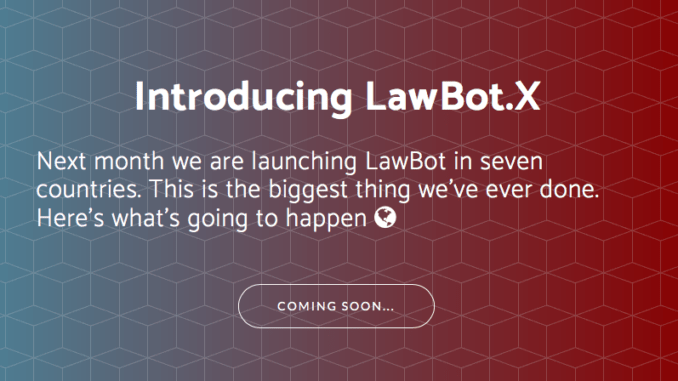
LawBot, the legal chat bot started by a group of Cambridge University law students, is to expand its capabilities by launching in seven countries. The group are also adding a case outcome prediction capability to assess the chance of winning a legal claim that the bot has analysed.
The re-launching will take place officially on July 24th in all seven countries. Up until recently LawBot has been mainly focused on English criminal law. It will now cover Great Britain, USA, Canada, Hong Kong, Singapore, Australia and New Zealand. There will also be a Chinese language capability for markets such as Hong Kong.
The free legal bot will also operate from a new platform and will be hosted on Facebook Messenger. The new service will also transfer users to a network of law firms, providing them with a bespoke service tailored to their legal needs. I.e. LawBot will act to some degree as a triage bot, allowing the public to interact with it, learn more about their legal needs and then, if appropriate, be directed to law firms in that jurisdiction/region that can help with their issues.
The new version of LawBot, called LawBot-X, also analyses information provided by users, using data science techniques to calculate their chances of winning a claim with 71% accuracy, say the founders.

Managing Director, Ludwig Bull stated: ‘In the past months the LawBot team has designed software calculating with high accuracy the outcome of a claim. We are proud to make this service available to the public. LawBot-X is significant both in its basic research in the application of AI to legal services and in its furthering of the rule of law.’
Bull has also recently launched another legal tech company, DenninX, which provides a legal research capability free of charge.
Marketing Director, Rebecca Agliolo added: ‘After the success of LawBot’s initial pilot project, we are excited to launch a platform designed to analyse the quality of users’ claims. We have moved from decision tree reasoning to data driven intelligence.’
6 Trackbacks / Pingbacks
Comments are closed.